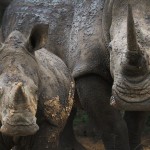Courtesy of Birdlife International

A new study has found that while governments are making progress in expanding Protected Area networks, these are failing to provide adequate coverage for nature.
In 2010, the world’s governments committed to conserving 17% of land and 10% of sea by 2020, particularly places of significance for nature. With five years to go to achieve this target, new research by 40 authors from 26 institutions led by BirdLife International, shows that the current Protected Areas system is still failing to cover all key sites, species and ecosystems.
The study, Shortfalls and solutions for meeting national and global conservation area targets, assessed those species that have been mapped for the IUCN Red List, including mammals, birds, amphibians, marine bony fishes, cartilaginous fishes, lobsters/crayfish, corals, mangroves and seagrasses. The important sites examined included 12,000 Important Bird and Biodiversity Areas and 600 Alliance for Zero Extinction sites. The ecological regions examined included terrestrial and marine ecoregions.
“We carried out the most comprehensive analysis to date of how well Protected Areas cover nature. We analysed nearly 12,000 important sites, over 1,000 terrestrial and marine ecological regions and over 25,000 species of animals and plants, including the first assessment for marine species”, said Dr Stuart Butchart, BirdLife International’s Head of Science and lead author of the paper.
“The analysis also revealed that only one-fifth of key sites for nature are completely covered by protected areas, with one third lacking any protection.”
Furthermore, less than half of mammals, amphibians, mangroves and various marine groups have a sufficient proportion of their distributions covered by the current Protected Area network to be adequately conserved. Threatened species in these groups, plus birds and corals, are even less well-covered.
Achieving adequate coverage of nature to meet globally adopted targets would require twice the area of land as found in the current global Protected Area network.
“Challengingly, the largest increases in land needing to be set aside for conservation are located in poorer countries of the world, which makes considerations of the benefits from conservation especially relevant”, added co-author Dr Neil Burgess, Head of Science at the United Nations Environment Programme World Conservation Monitoring Centre.
“Achieving this level of growth in protected lands and seas will require greater recognition and increased establishment of indigenous and community-conserved areas, private reserves, land trusts, and sustainably managed areas that provide conservation outcomes”, said Dr Thomas Brooks, Head of Science and Knowledge at the International Union for the Conservation of Nature (IUCN).
“This study should be a wake-up call to governments and other conservationists across the world. Meeting the target will require accelerated recognition and designation of effective conservation areas that are much better targeted towards important sites for nature”, concluded Butchart.





1 thought on “World’s Governments are Failing on Protected Areas for Nature”
Comments are closed.